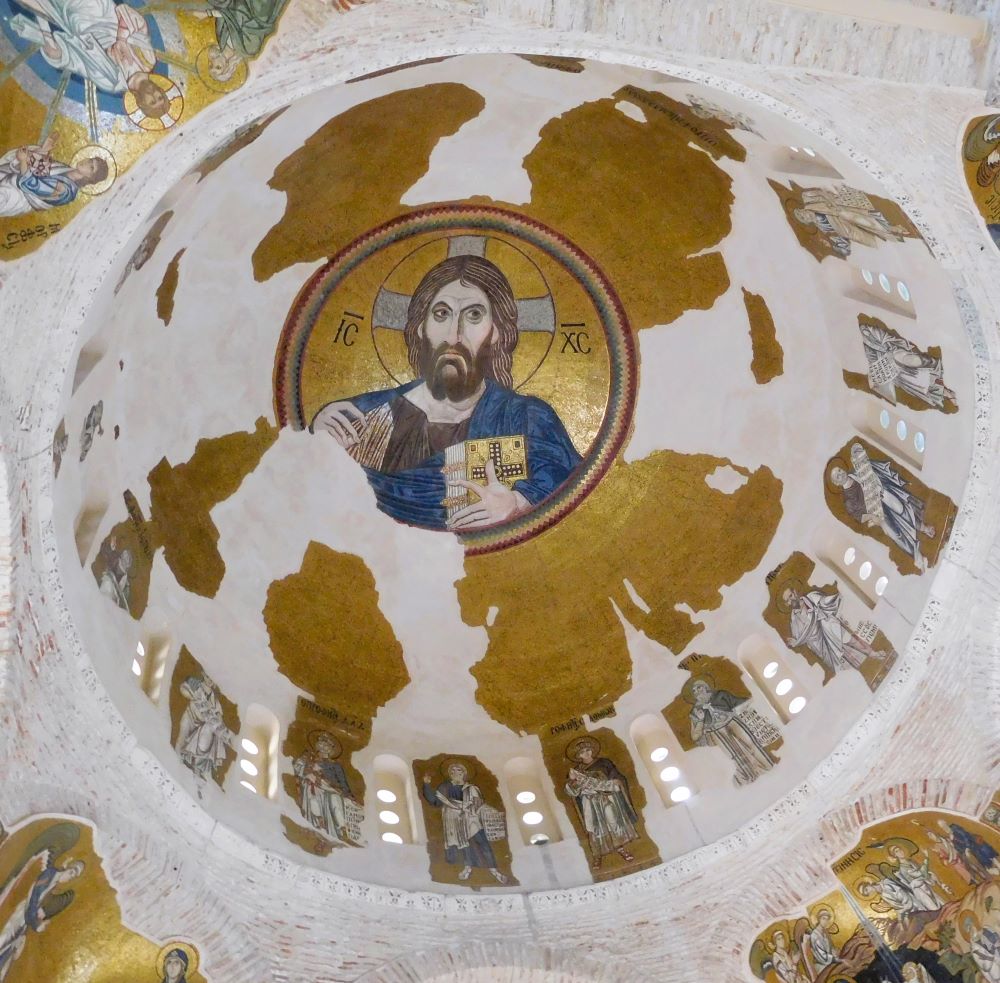Understanding Byzantine Iconography: Colors, Images, and Symbolism
Byzantine iconography refers to the religious art of the Byzantine Empire, primarily associated with Eastern Orthodox Christianity. These icons served as windows into the divine, bridging the gap between the earthly and the spiritual realms. They were not mere artworks but held profound religious significance, often used for meditation, prayer, and teaching. Many a times, the first reaction when one encounters a Byzantine icon for the first time is to step back especially when one tries to approach the icon with a mindset of Renaissance or realistic perspective.
Byzantine iconography boasts a distinctive style characterized by its emphasis on symbolism and allegorical representation, flattened perspective, and vibrant colors. Iconographers utilize symbolic imagery to convey meanings and messages that extend beyond what initially catches the eye.

Throughout this blog, we will take a look at some key elements of a typical Byzantine icon.
Color Palette
The color palette in Byzantine iconography was deliberately chosen for its symbolic value:
- Gold: Symbolizing the divine light, holiness, and the heavenly realm.
- Blue: Representing the heavens, eternity, and divinity.
- Red: Symbolizing the divine life and sacrifice, often associated with Christ’s blood.
- Green: Reflecting renewal, fertility, and the presence of the Holy Spirit.
- White: Signifying purity, divine light, and resurrection.
- Purple: Associated with royalty, majesty, and penitence.
- Black: Symbolizing mystery, depth, and the unknown.

Images and Their Meanings
- Christ Pantocrator: One of the most iconic images, Christ Pantocrator, depicts Jesus as the ruler and judge of the world, often portrayed with a serious expression, holding a book or making a gesture of blessing.
- Theotokos (Virgin Mary): The mother of Jesus is often shown in a tender and compassionate manner, symbolizing maternal love, purity, and intercession.
- Saints and Angels: These figures are depicted with specific attributes or symbols identifying their martyrdom, miracles, or particular characteristics. Angels are often shown in colorful garments symbolizing their celestial nature.
- Narrative Scenes: Icons frequently depict scenes from the life of Christ, the Gospels, or saints’ lives, serving as visual representations of important religious narratives.
Symbolism and Composition
- Halos: Circular or cruciform halos indicate the sanctity of figures. Gold or silver leaf often forms these halos.
- Gestures and Postures: Specific hand gestures, such as the blessing hand or particular postures, convey different messages or divine attributes.
- Background and Perspective: Flat and symbolic rather than realistic, the lack of depth in Byzantine icons aims to emphasize the spiritual over the material world.
Techniques and Traditions
The technique of Byzantine iconography involves a highly ritualized and symbolic process. It demands meticulous attention to detail, specific proportions, and adherence to traditional styles and forms. For example, at each stage, the icon writer prays and contemplates on one’s life.
Conclusion
Byzantine iconography is more than an artistic expression; it’s a profound spiritual language that encapsulates the core beliefs and narratives of Eastern Orthodox Christianity. Its colors, images, and symbolism carry deep theological significance, inviting viewers to contemplate the divine and enter into a deeper understanding of their faith.
The tradition of Byzantine iconography continues to influence and inspire artists and viewers, offering a timeless connection to the spiritual world through its vibrant colors, symbolic imagery, and theological depth.